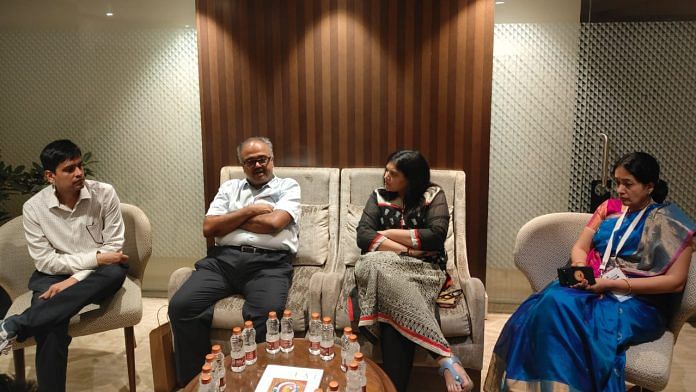Bengaluru: The biggest challenge for government policymakers on Artificial Intelligence across the world is keeping up with the sheer pace of technological change.
“But that should not prevent innovation,” said OpenAI’s Vice President of Engineering, Srinivas Narayanan, at a special press meet during the two-day IIT Madras Alumni Startup Pitch Fest held in Bengaluru.
He added that governments still have a significant role to play in shaping this technology, even if their challenge is just to play catch-up.
“When you have very mature technology, you can think about policies and stuff in a more clear way. But when things are changing so quickly, to craft (policies) is a harder challenge,” Narayanan told ThePrint.
He was joined by Balaraman Ravindran, who heads the Department of Data Science and Artificial Intelligence at IIT Madras, and Aparna Chennapragada, Chief Product Officer, Microsoft.
While India does not have a dedicated, single AI law at present, the government is developing a comprehensive regulatory universe. India’s NITI Aayog had earlier identified five sectors where AI use would be significant — healthcare, agriculture, education, infrastructure, and transportation. To truly reap the benefits of deploying AI at scale, the report said, privacy, security, and the absence of a regulatory framework around anonymisation of data should be addressed.
“The one domain that is not that well covered (under regulation) is deep fakes. We have to figure out how we’re going to deal (with synthetic media information),” Ravindran told ThePrint.
Indian AI: Funding issues
India’s AI ecosystem lacks state-of-the-art AI services for researchers to build models. For instance, a student who needs to perform computationally heavy tasks will inevitably have to collaborate with international institutions for the facilities, according to Ravindran.
“By the time I finish learning how to build a good model, I would have exhausted all the GPU credits for the lab for the month,” he said. “I think the biggest constraint for (AI) research in India is funding.”
According to Union Minister for Electronics & Information Technology, Ashwini Vaishnaw, India is set to launch its own secure, low-cost AI models, with computation priced below Rs 100 per hour after a 40 per cent government subsidy.
A government press release said multiple, low-cost foundational models built in Indian languages will likely be ready later this year, which will help researchers, students and general users with fast computing and prompt results.
“To begin with, 18 citizen centric applications pertaining to the agriculture sector, learning disability & climate change to be part of this AI Model,” the release stated.
Ravindran noted that the paid version of ChatGPT performs with greater accuracy compared to the free version. Nonetheless, he expressed concern about the cost barrier that prevents broader access to better AI.
“India has a very big user base for us. It’s the second-largest market and we are interested in solving problems for India as well,” Narayanan said.
Indian AI: Culturally relevant problems
AI models built in India need to address problems specific to the country, said members at the event. According to Chennapragada, these models need to be trained on data sourced from India.
“A lot of the training content, by and large — if you look at the skew of the distribution — may not include enough material from the country itself,” she added at the press meet.
While global models are necessary to focus on larger problems, regional innovations are needed to tackle culturally specific issues.
AI4Bharat, a MeitY-backed research lab at IIT Madras, is leading large-scale data collection to advance Indian technology. As part of Bhashini’s Data Management Unit, the initiative aims to gather 15,000 hours of transcribed speech across 400 districts in 22 scheduled languages. A team of over 100 translators is creating a parallel corpus of 2.2 million translation pairs.
Nonetheless, a large portion of India’s linguistic and cultural wealth isn’t digitised yet.
“Skilled professionals capable of training and deploying these models efficiently are limited. While fine-tuning models is feasible with modest infrastructure, training from scratch on large datasets remains resource-intensive,” Ravindran wrote in a commentary published in Nature India in May 2025, as part of the collection on Artificial Intelligence in the Global South created jointly by Nature India, Nature Africa, and Nature Middle East.
(Edited by Prashant)






